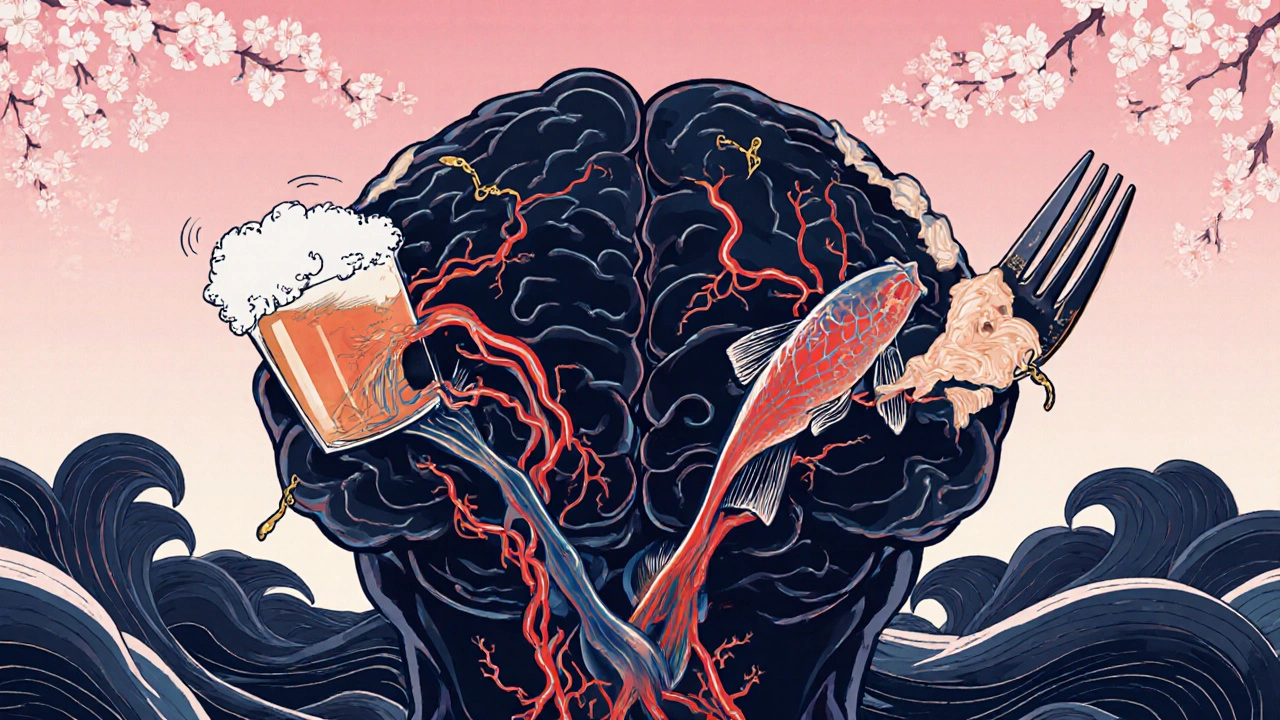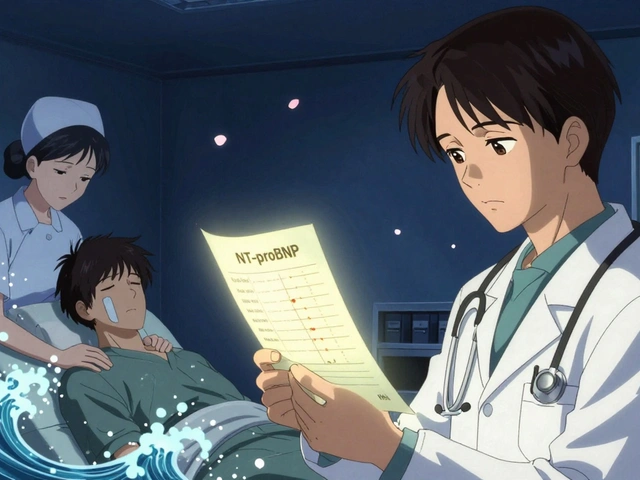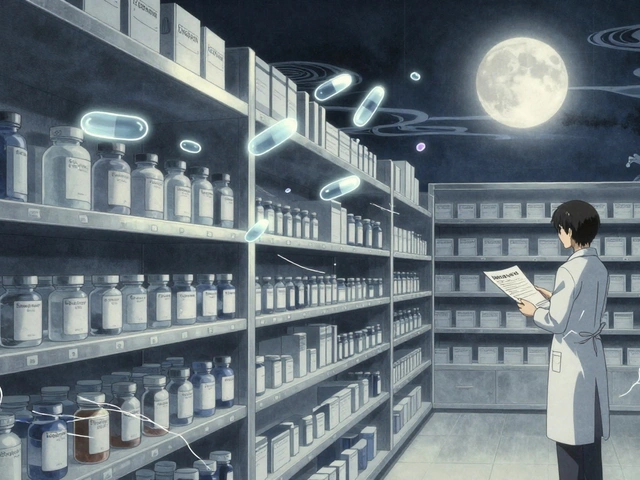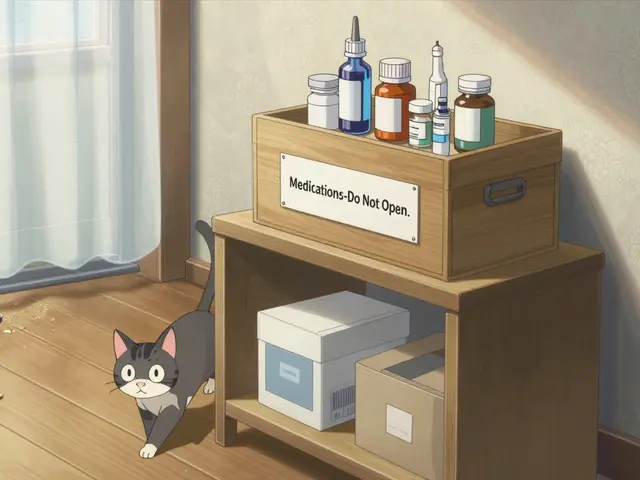Ever wondered why someone struggling with heavy drinking might also battle an eating disorder? It’s not a coincidence - the two conditions often intertwine in complex ways. This article unpacks the science, the shared risk factors, and practical ways to spot and treat the overlap.
What is Alcohol Dependence Syndrome?
When we talk about Alcohol Dependence Syndrome, we mean a pattern of drinking that leads to physical tolerance, withdrawal symptoms, and an inability to cut back despite serious harm. The DSM‑5 classifies it under “Alcohol Use Disorder” and measures severity with tools like the AUDIT (Alcohol Use Disorders Identification Test). People with this syndrome often experience cravings, loss of control, and persistent drinking that dominates daily life.
What Are Eating Disorders?
Eating Disorders are a group of mental‑health conditions where thoughts, emotions, and behaviors around food become distorted. The most common types are Anorexia Nervosa, Bulimia Nervosa, and Binge‑Eating Disorder. All three share an intense preoccupation with body weight, shape, and control, but they differ in how that control is expressed - restriction, binge‑purge cycles, or uncontrollable overeating.
How Often Do They Co‑Occur?
Research shows that 30‑45 % of people with an eating disorder also meet criteria for an alcohol use problem, while around 20‑25 % of those with alcohol dependence report disordered eating patterns. These numbers rise even higher in clinical settings, suggesting a strong comorbidity that clinicians can’t ignore.
Shared Risk Factors
Several underlying factors drive both conditions:
- Genetic predisposition: Family studies reveal overlapping genes that affect dopamine and serotonin pathways. A shared genetic load makes some people vulnerable to both substance misuse and disordered eating.
- Neurotransmitters like dopamine and serotonin regulate reward and mood. Dysregulation can heighten cravings for alcohol and also trigger impulsive binge episodes.
- Trauma and adverse childhood experiences: Physical, emotional, or sexual abuse often precedes both alcoholism and eating disorders, creating a cycle of self‑medication.
- Personality traits such as perfectionism, impulsivity, and high stress reactivity appear in both groups.
- Societal pressures around body image and drinking culture can reinforce each other - think of “drinks after a binge meal” or “using alcohol to hide body dissatisfaction.”

How One Disorder Fuels the Other
Alcohol can act as a maladaptive coping tool for people who feel trapped by their eating habits. A binge‑eating episode may be followed by heavy drinking to “erase” guilt, while chronic drinking can disrupt appetite hormones, leading to erratic eating patterns. Conversely, restrictive eating can increase irritability and low mood, pushing the person toward alcohol for temporary relief.
Screening and Diagnosis: Spotting Dual Diagnosis
Because the symptoms overlap, clinicians need a systematic approach:
- Use the AUDIT to flag risky drinking patterns early.
- Apply the EDE‑Q (Eating Disorder Examination Questionnaire) to capture eating‑related behaviors.
- Refer to the DSM‑5 criteria for both Alcohol Use Disorder and specific eating disorders.
- Assess for co‑occurring mood disorders, which often act as a bridge between the two.
- Document any history of trauma, as this guides treatment planning.
Integrated Treatment Approaches
Treating one condition without addressing the other usually leads to relapse. Effective programs combine medical, psychological, and nutritional strategies:
- Medical stabilization: For severe alcohol withdrawal, a medically supervised detox is mandatory before any psychotherapy.
- Cognitive Behavioral Therapy (CBT) targets distorted thoughts about food and alcohol, teaching healthier coping skills.
- Motivational Interviewing boosts readiness to change by exploring ambivalence around both substances and eating patterns.
- Nutrition counseling corrects deficiencies caused by binge eating or chronic drinking.
- Medication can help: naltrexone reduces alcohol cravings, while SSRIs may alleviate depressive symptoms that fuel binge eating.
- Support groups like AA (Alcoholics Anonymous) and DBT‑based eating‑disorder meetings offer peer encouragement.
Practical Tips for Clinicians and Caregivers
Whether you’re a therapist, a primary‑care doctor, or a family member, these pointers can make a difference:
- Ask about both alcohol use and eating habits in every intake interview - a simple “How often do you drink?” followed by “How would you describe your relationship with food?” can open doors.
- Normalize the conversation: explain that many people experience both issues, which reduces shame.
- Develop a joint treatment goal sheet that lists measurable outcomes for drinking (e.g., number of drinks per week) and eating (e.g., regular meals, no binge episodes).
- Monitor weight and liver function labs simultaneously; sudden weight changes can signal worsening binge behavior or liver disease.
- Encourage safe, non‑alcoholic stress‑relief activities - walking, art, mindfulness - to replace the habit loop.
Key Takeaways
- The link between alcohol dependence and eating disorders is driven by genetics, brain chemistry, trauma, and cultural pressures.
- Comorbidity rates are high; screening for both conditions should be routine.
- Integrated treatment that combines detox, psychotherapy, nutrition, and medication yields the best outcomes.
- Open, non‑judgmental communication is essential for early detection and sustained recovery.
Frequently Asked Questions
Can someone with an eating disorder become addicted to alcohol later in life?
Yes. Because both conditions share underlying vulnerabilities, a person who has recovered from an eating disorder may develop problematic drinking patterns during stressful periods or after relapse.
Do medications for alcoholism affect eating‑disorder symptoms?
Some do. Naltrexone, for instance, can reduce cravings for alcohol and may also decrease binge‑eating urges because it blocks the brain’s reward pathways.
Is it safe to attend AA meetings if I have an eating disorder?
Generally, yes, but it helps to choose groups that are supportive of body‑image concerns. Some AA chapters run specialized “dual‑diagnosis” sessions.
How quickly can liver damage appear in someone who binge‑eats and drinks heavily?
Liver enzymes can rise within weeks of chronic heavy drinking, especially when combined with poor nutrition from binge eating. Regular blood tests are critical.
What are the best screening tools for dual diagnosis?
A combination of the AUDIT for alcohol use and the EDE‑Q or SCOFF questionnaire for eating disorders works well. Adding the PHQ‑9 for depression gives a fuller picture.








Abhishek Kumar
October 23, 2025 AT 18:41The link seems obvious.
hema khatri
October 27, 2025 AT 05:01Our nation’s youth are being fed lies about health, and it drives me mad!!! The government pushes alcohol like a cultural weapon, while ignoring the silent scream of eating disorders!!! It’s a betrayal of our bodies, a double‑edged sword that ruins generations!!! We must stand up, call out the hypocrisy, and demand integrated care for our people!!! No more silence, no more shame.
Jennell Vandermolen
October 30, 2025 AT 02:28Thanks for sharing your passion. It’s important to remember that both issues share neuro‑biological pathways, so integrated screening can save lives. Clinicians should ask about drinking when assessing disordered eating, and vice‑versa.
Mike Peuerböck
November 2, 2025 AT 19:21From a clinical perspective, the co‑occurrence of alcohol dependence and eating disorders demands a multidisciplinary approach. The neurochemical overlap of dopamine and serotonin underscores the need for pharmacological adjuncts such as naltrexone and SSRIs. Moreover, structured CBT protocols that address both substance use and maladaptive eating behaviors have demonstrated superior outcomes. In practice, we must align detoxification schedules with nutritional rehabilitation to prevent relapse.
Simon Waters
November 5, 2025 AT 05:41People don’t realise the pharma industry hides the truth. They push pills that mask symptoms while the real problem stays hidden. It’s all a big cover‑up.
Vikas Kumar
November 8, 2025 AT 05:54That’s a pathetic excuse for ignoring our heritage. We should be proud of our resilience, not bow to western poison.
Celeste Flynn
November 12, 2025 AT 04:21The relationship between alcohol dependence and eating disorders is far more intricate than most headlines suggest. First, both conditions often share a dysregulated stress response, meaning that one can serve as a maladaptive coping mechanism for the other. For instance, after a binge‑eating episode, individuals may reach for a drink to dull the guilt that follows. Conversely, chronic alcohol use can alter leptin and ghrelin levels, which are hormones that regulate hunger and satiety. This hormonal disruption can lead to erratic eating patterns, ranging from restrictive intake to compulsive overeating. Genetic studies have identified polymorphisms in the serotonin transporter gene that increase susceptibility to both substance use and disordered eating. Trauma, especially in early childhood, frequently underpins both addictions, creating a shared neuro‑psychological pathway. Social pressures compound the problem, as cultural norms often glorify drinking while simultaneously stigmatizing body‑size concerns. Clinically, the overlap poses a diagnostic challenge because withdrawal symptoms can mask or mimic eating‑related anxiety. Effective assessment therefore requires a dual‑screening protocol that incorporates tools such as the AUDIT alongside the EDE‑Q. Treatment models that integrate medical detox, cognitive‑behavioral therapy, and nutrition counseling have shown the highest remission rates. Pharmacologically, naltrexone not only reduces alcohol cravings but also dampens the reward response associated with binge eating. Meanwhile, selective serotonin reuptake inhibitors can alleviate depressive symptoms that often fuel both disorders. Peer support groups, whether AA or DBT‑based eating‑disorder meetings, provide essential community reinforcement when used together. Ultimately, a holistic, patient‑centered plan that addresses both the physiological and psychological dimensions is the most promising path to sustainable recovery.
Shan Reddy
November 13, 2025 AT 22:01I appreciate the thorough overview. It’s a solid reminder that we can’t treat one disorder in isolation.
CASEY PERRY
November 17, 2025 AT 03:48Dual‑diagnosis protocols require integrated data pipelines. Standardized scoring algorithms improve detection sensitivity. Implementation hinges on inter‑disciplinary EMR compatibility.
Naomi Shimberg
November 19, 2025 AT 08:34While you emphasize integration, the reality is that siloed funding structures perpetuate fragmented care. The system resists change, and that is precisely the problem.
kenny lastimosa
November 22, 2025 AT 22:41One might ask whether the pursuit of labels obscures the lived experience of suffering. Perhaps the focus should shift from categories to narratives. Healing could emerge from storytelling rather than taxonomy.
Heather ehlschide
November 25, 2025 AT 00:41That’s an insightful perspective. Encouraging patients to articulate their story can indeed foster empowerment and guide individualized treatment plans.
Kajal Gupta
November 28, 2025 AT 00:54I’ve seen relatives caught in the loop of booze and binge eating, and it’s heartbreaking. Their days swing from reckless drinking to frantic calorie counting. We need compassionate clinics that treat both sides of the coin, not just the alcohol or the food. Let’s push for policies that fund combined programs.
Zachary Blackwell
November 30, 2025 AT 11:14Funny how the “official” research ignores the hidden agenda of big pharma. They profit from keeping treatments separate, ensuring a steady stream of prescriptions. Let’s question who really benefits from this division.
prithi mallick
December 3, 2025 AT 17:01True, the system seems designed to keep us disjointed. Yet, sharing our stories can bridge that gap, even if we make a typo or two.